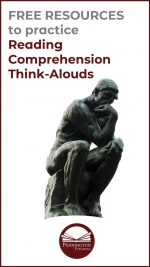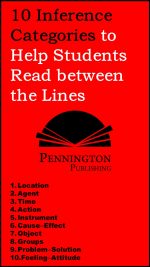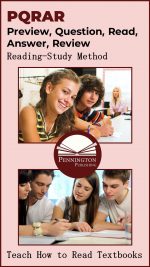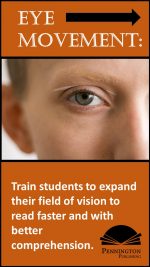How to Use Think-Alouds to Practice Reading Comprehension
You, the teacher, are the best reader in your class. Students need specific models of what it means to understand challenging reading text. Why not share how you read with your students and encourage developing readers to do as you do? You can do so with a comprehension think-aloud.
Teaching students to carry on an internal dialogue with the author and text as they read is vitally important. “Talking with the text” significantly increases reader comprehension and promotes retention, as well. However, this is not a skill acquired by osmosis. It requires effective modeling using the Think-Aloud strategy.
Good readers are adept at practicing many metacognitive strategies. That’s a big word that means “thinking about thinking.” Research shows that 50% of reading comprehension is based on what the reader brings to the text by way of prior knowledge and internal dialogue. Students who practice the self-monitoring strategies modeled by teachers using Think-Alouds have better reading comprehension than those who do not.
Here’s how to set-up an effective Think-Aloud with your students:
1. Select a short reading with a beginning, middle, and an end.
2. Tell students that they are about to enter a strange new world, that is the world of your thoughts as a reader. Tell them that your thoughts will not be the same thoughts as theirs.
3. Tell them that reading is not just pronouncing words; it is making meaning out of what the author has written. Tell them that they can improve their reading comprehension.
4. Begin reading the text for a few lines and then alter your voice (raise the pitch, lower the volume, or use an accent) to model what you are thinking. Stop and explain what the voice altering meant and keep this voice altering consistent throughout the Think-Aloud.
5. Keep your thoughts concise and on the focus of the reading. Don’t ramble on with personal anecdotes. Comment much more on the text than on your personal connection with the text.
6. Don’t over-do the amount of your Think-Aloud thoughts. Once every paragraph or two is about right. Don’t interrupt the flow of the reading and lose sight of the textual meaning.
7. Talk to the text and to the author.
8. Ask students if they think they understood the text better because of your verbalized thoughts than just by passively reading without active thoughts. Their answer will be “Yes,” if you have done an effective Think-Aloud.
9. Have students practice their own Think-Alouds in pairs.
10. Repeat Think-Alouds often with both narrative and expository texts.
*****
*****
The Science of Reading Intervention Program
Pennington Publishing provides two reading intervention program options for ages eight–adult. The Teaching Reading Strategies (Intervention Program) is a full-year, 55 minutes per day program which includes both word recognition and language comprehension instructional resources (Google slides and print). The word recognition components feature the easy-to-teach, interactive 5 Daily Google Slide Activities: 1. Phonemic Awareness and Morphology 2. Blending, Segmenting, and Spelling 3. Sounds and Spelling Independent Practice 4. Heart Words Independent Practice 5. The Sam and Friends Phonics Books–decodables 1ith comprehension and word fluency practice for older readers. The program also includes sound boxes and personal sound walls for weekly review. The language comprehension components feature comprehensive vocabulary, reading fluency, reading comprehension, spelling, writing and syntax, syllabication, reading strategies, and game card lessons, worksheets, and activities. Word Recognition × Language Comprehension = Skillful Reading: The Simple View of Reading and the National Reading Panel Big 5.
If you only have time for a half-year (or 30 minutes per day) program, the The Science of Reading Intervention Program features the 5 Daily Google Slide Activities, plus the sound boxes and personal word walls for an effective word recognition program.
PREVIEW TEACHING READING STRATEGIES and THE SCIENCE OF READING INTERVENTION PROGRAM RESOURCES HERE for detailed product description and sample lessons.
Get the SCRIP Comprehension Strategies FREE Resource:
![]()
Get the Diagnostic ELA and Reading Assessments FREE Resource:![]()
Get the Syllable Awareness Assessment FREE Resource:
![]()
Get the Syllable Rules FREE Resource:
![]()
Get the Accent Rules FREE Resource:
![]()
Literacy Centers, Reading, Spelling/Vocabulary, Study Skills







